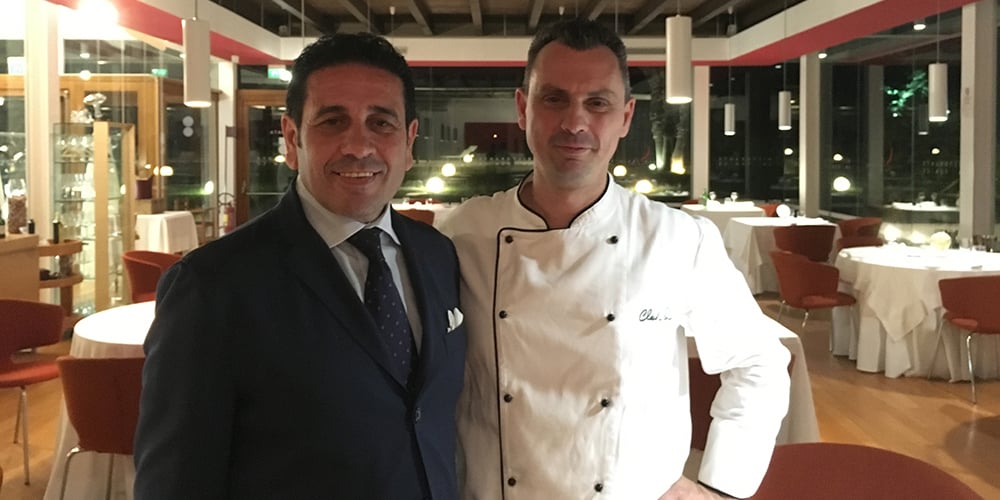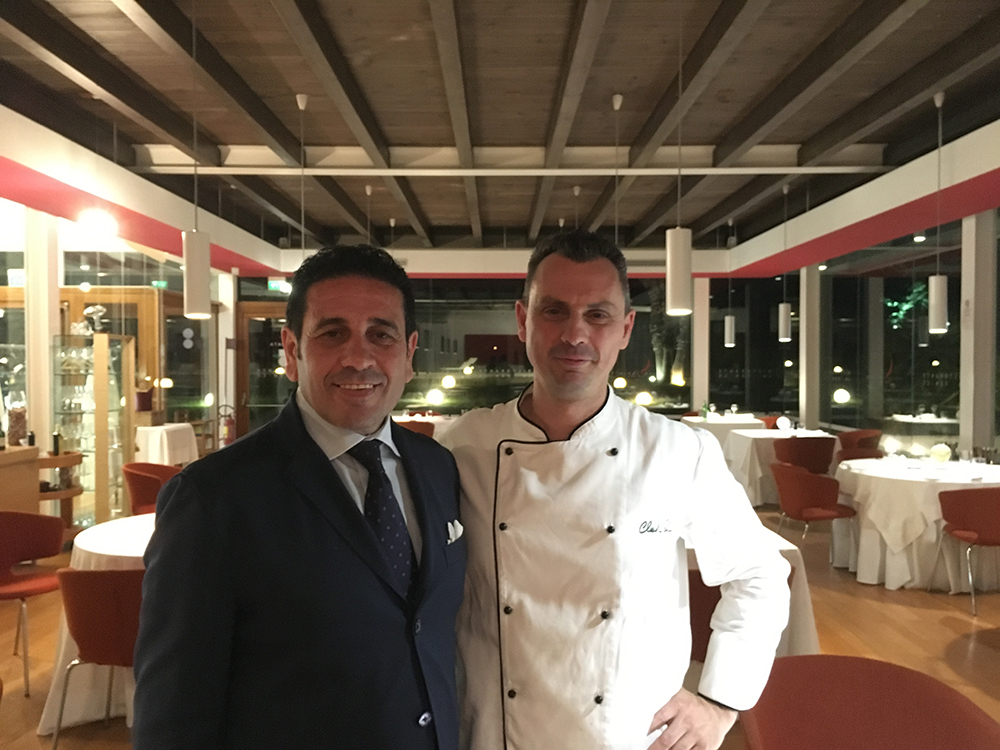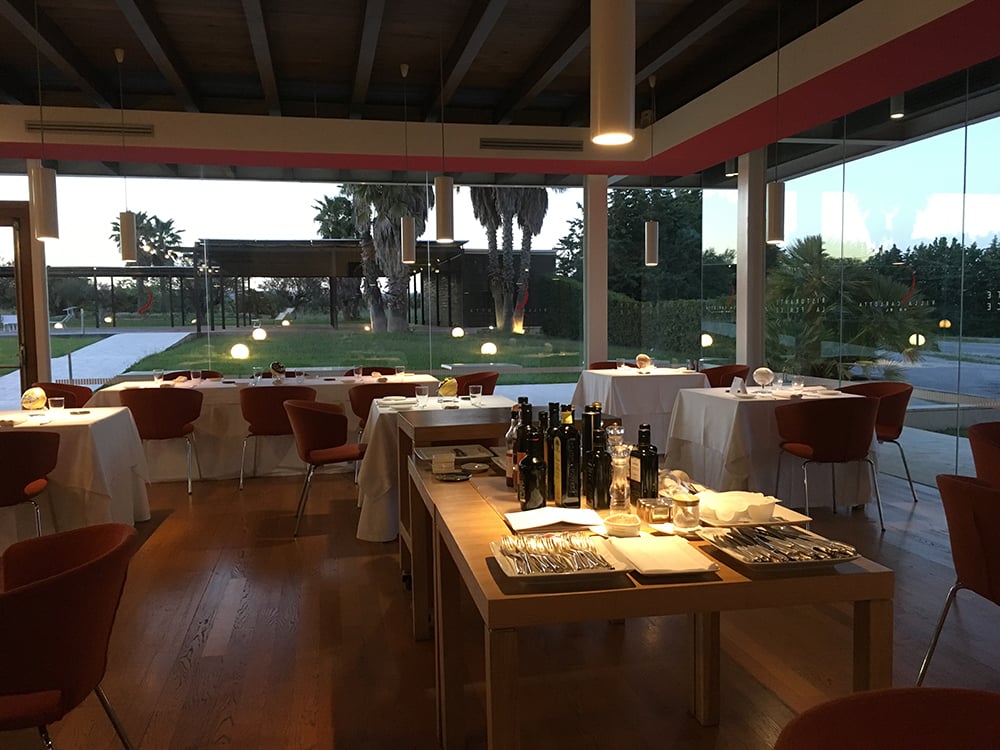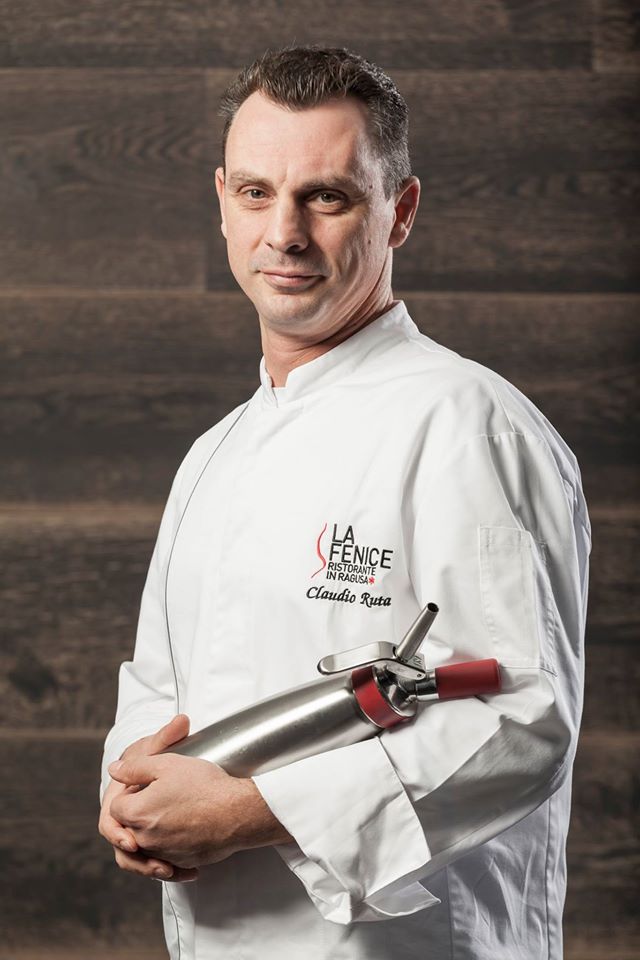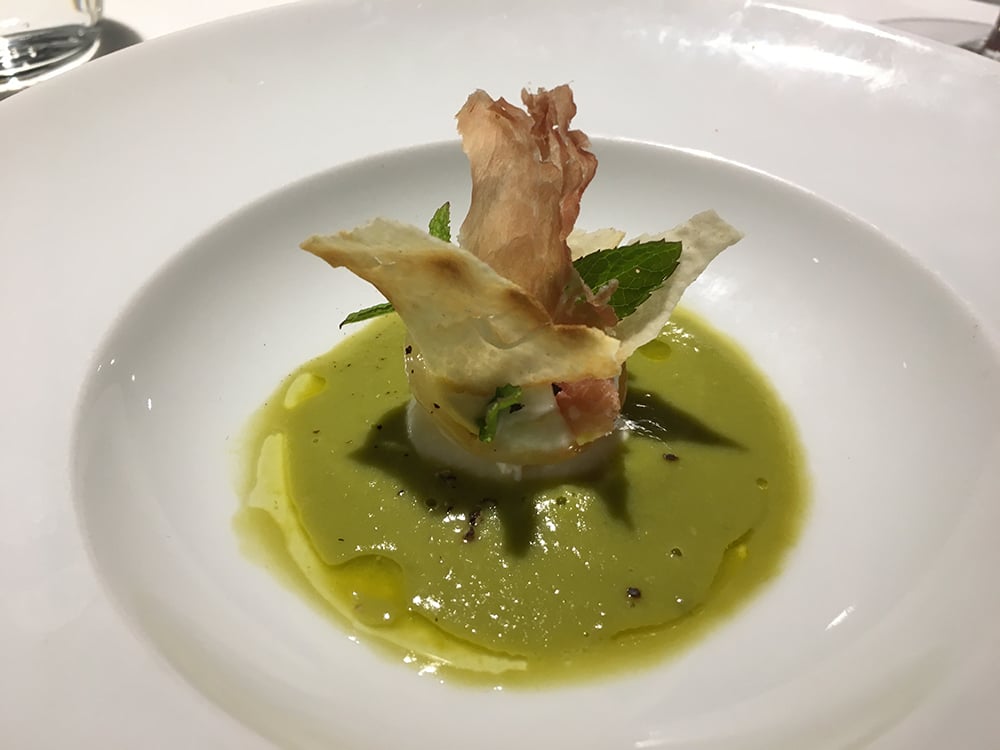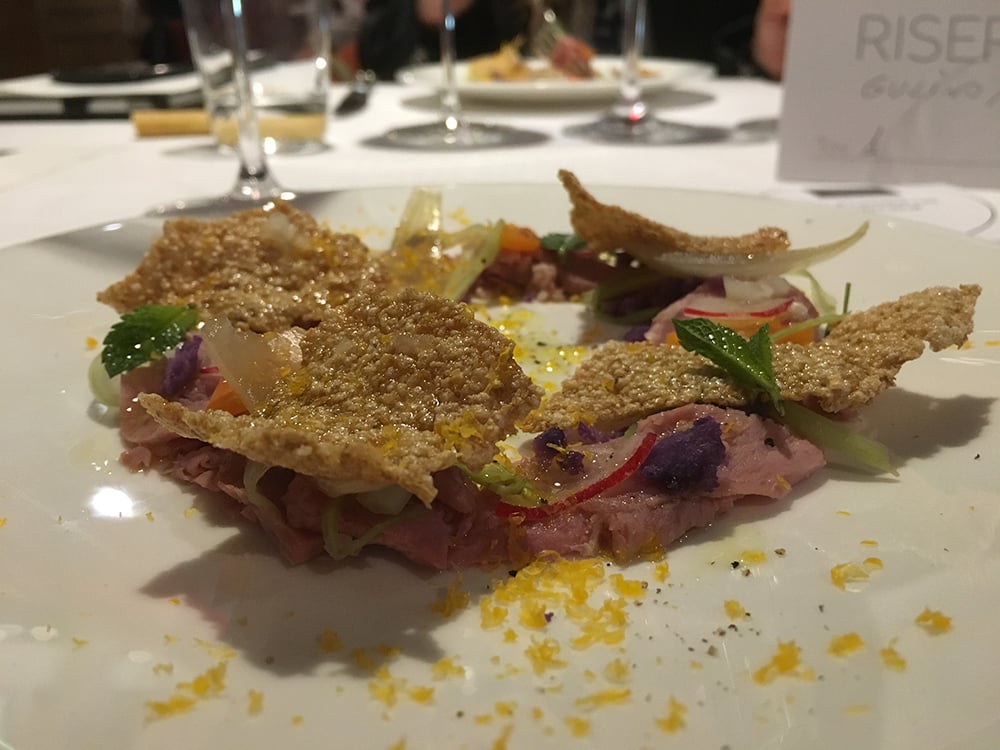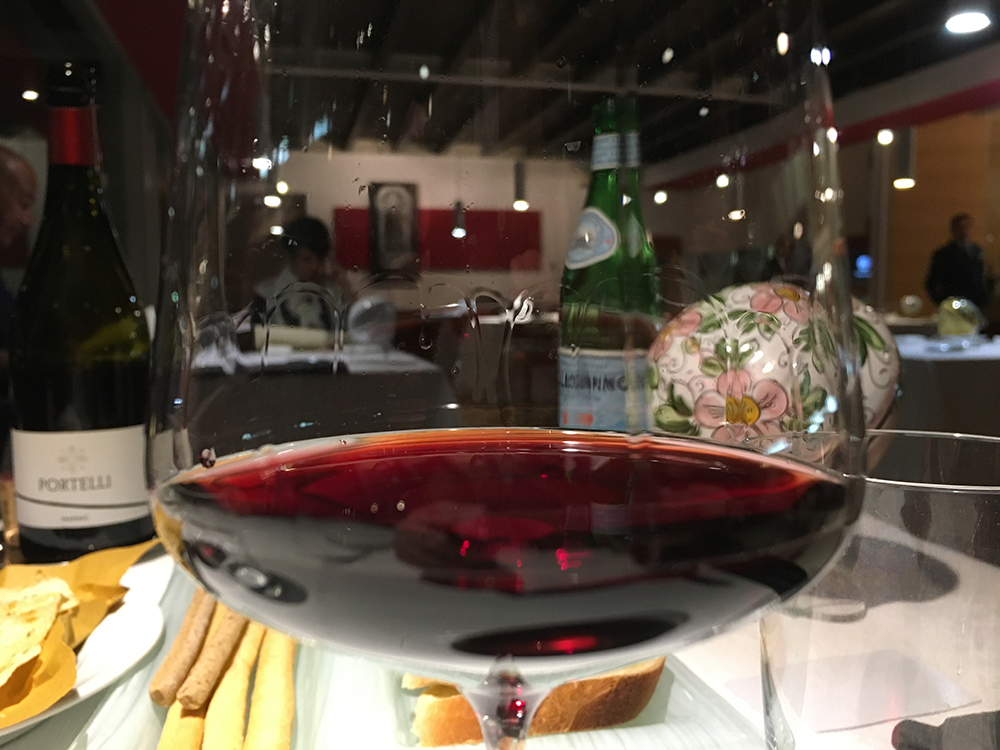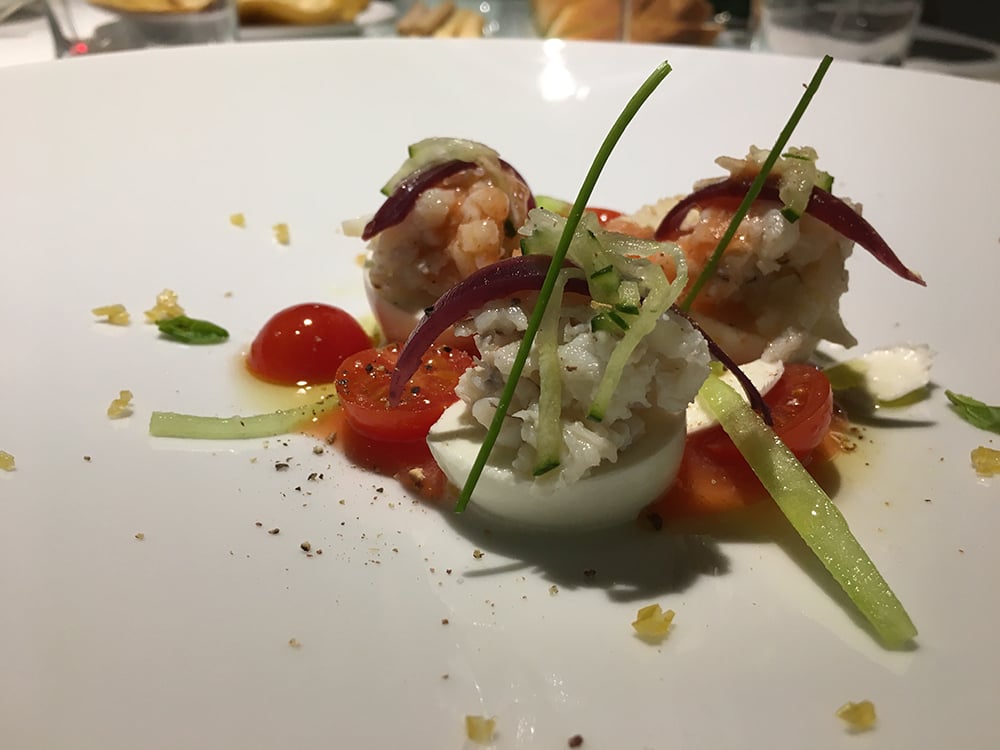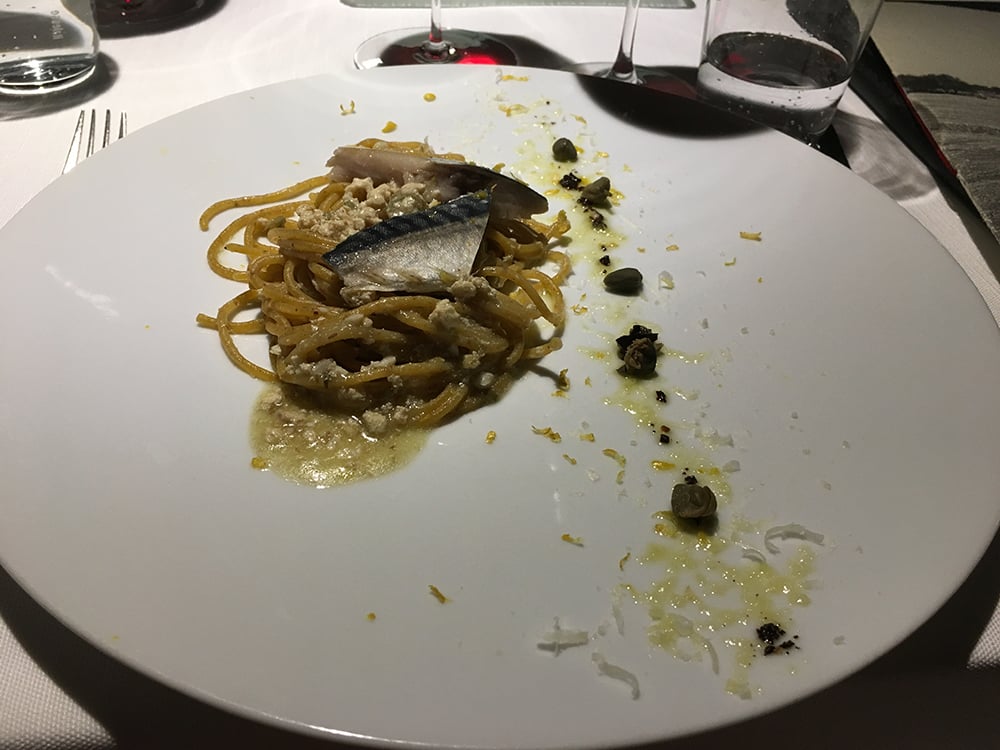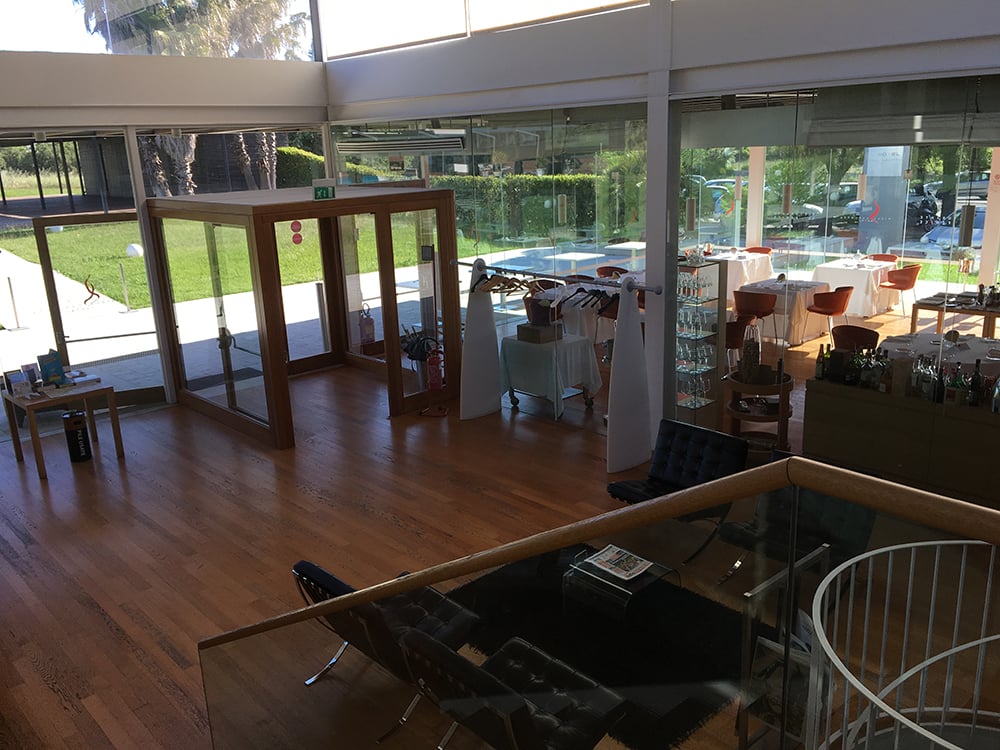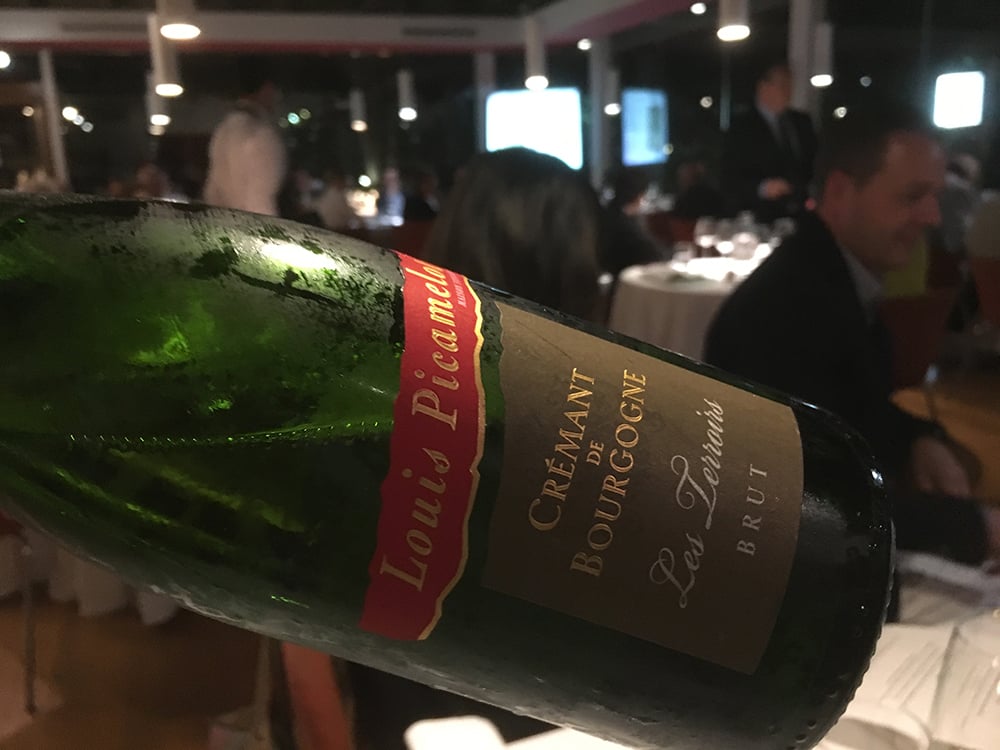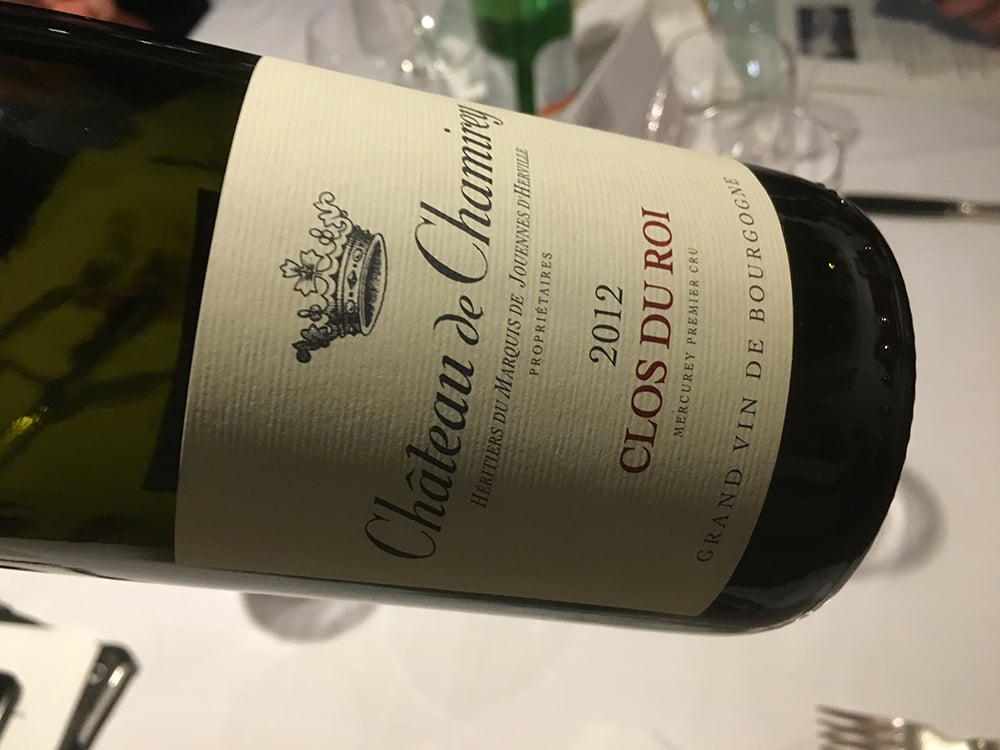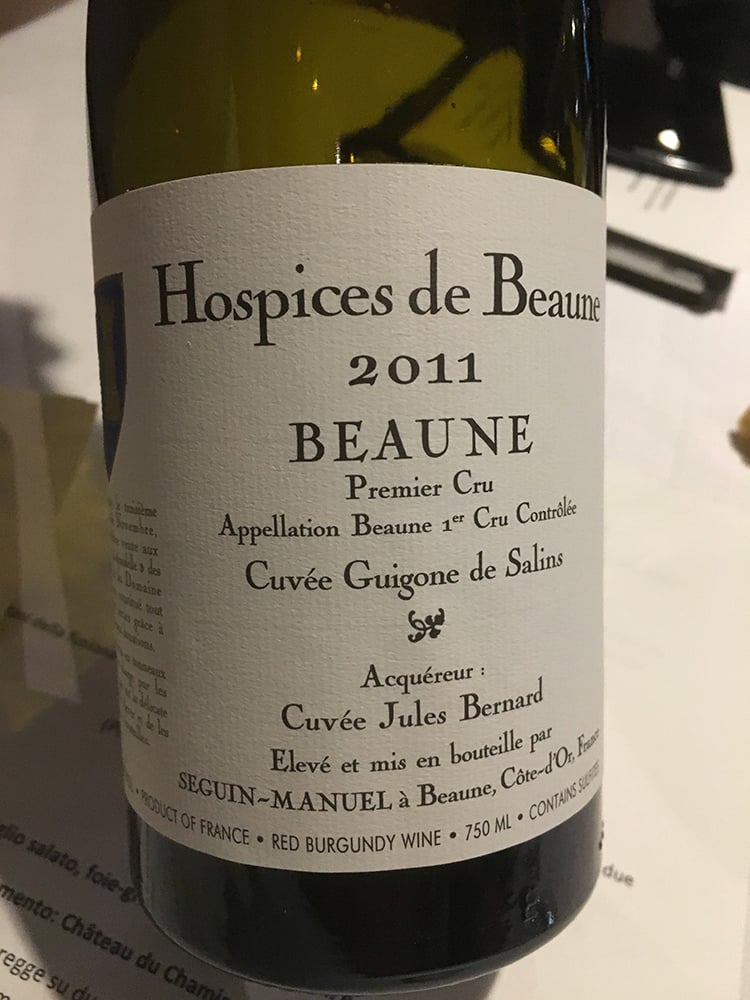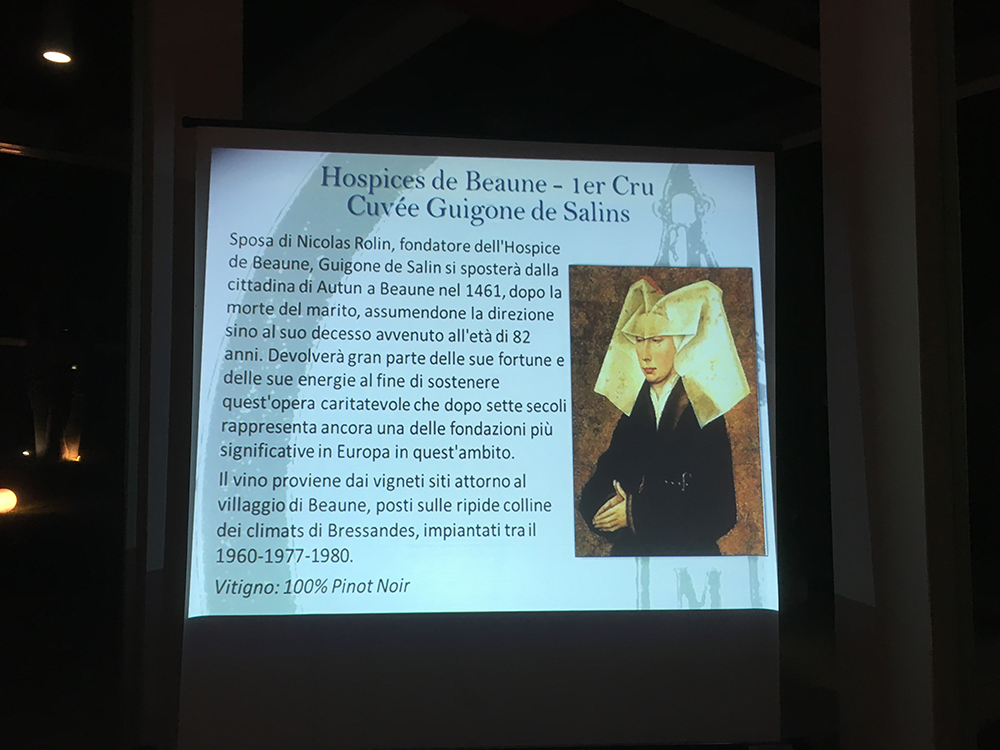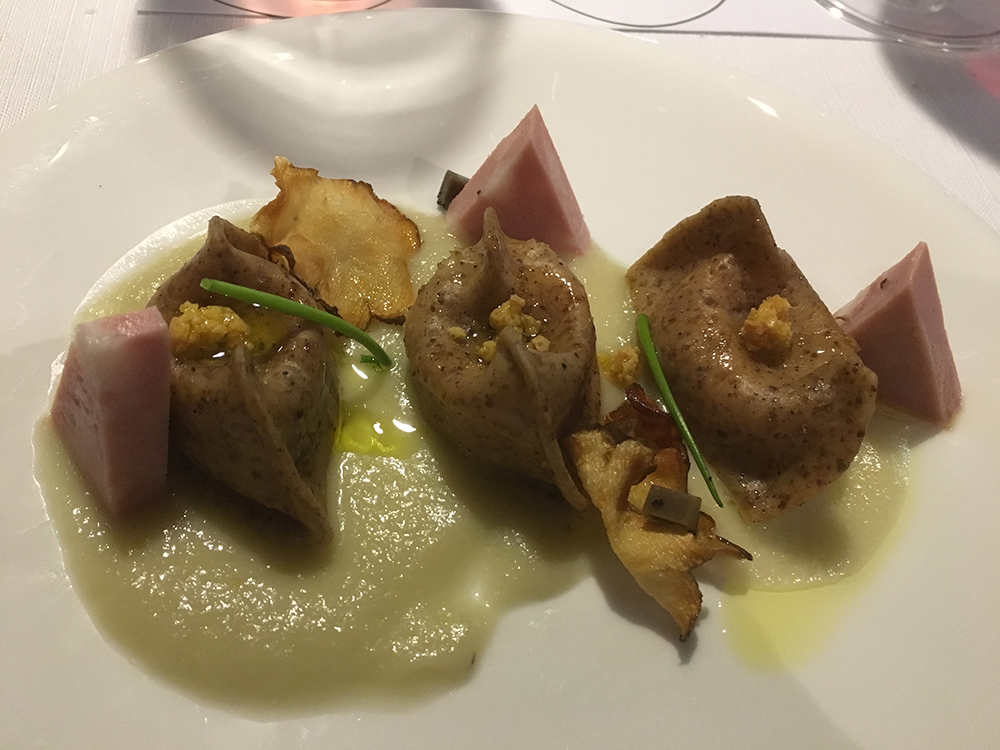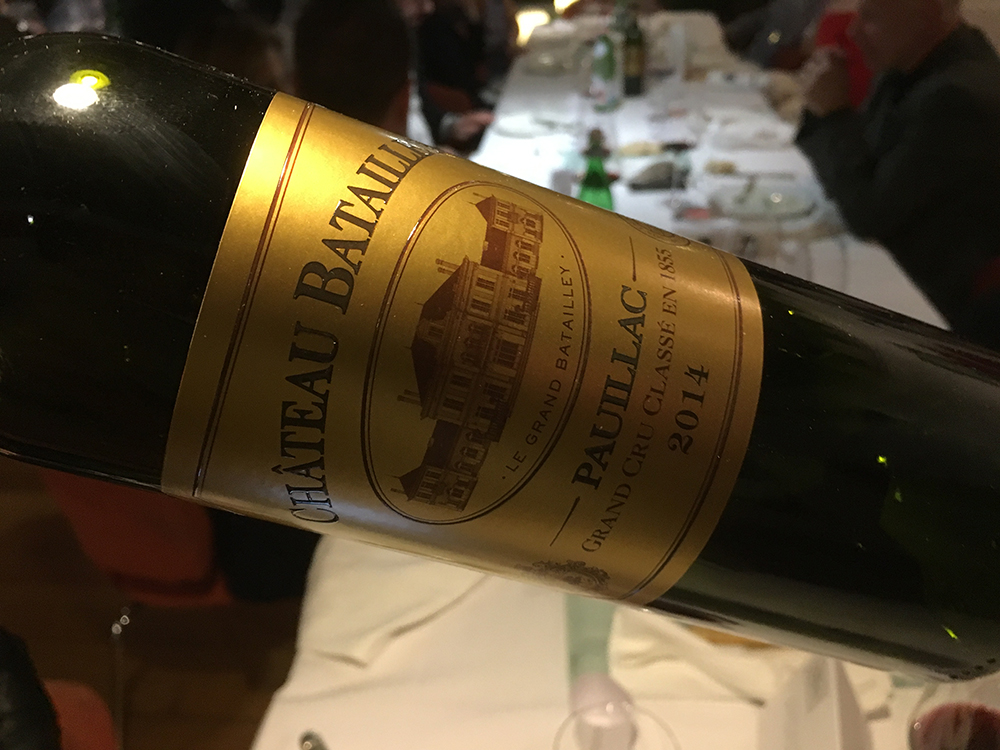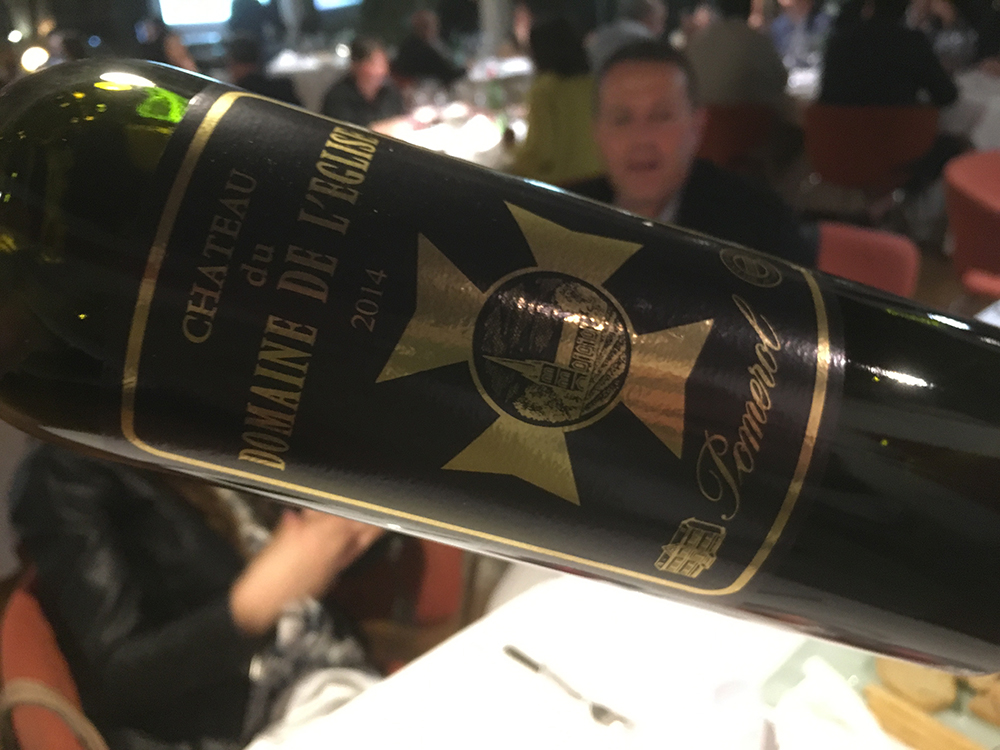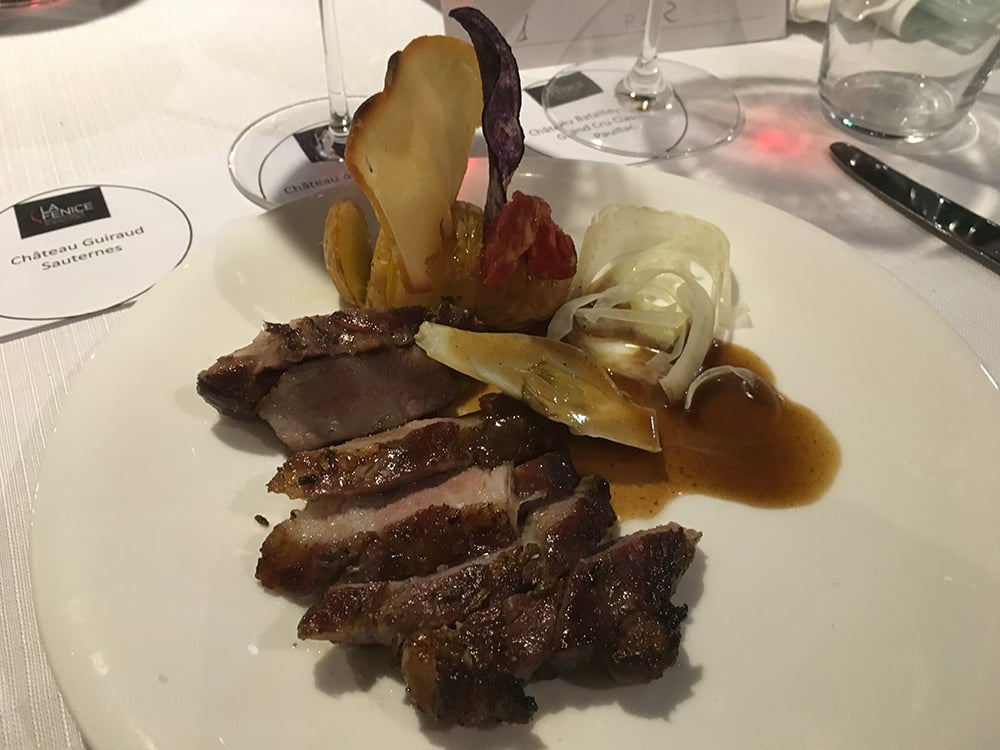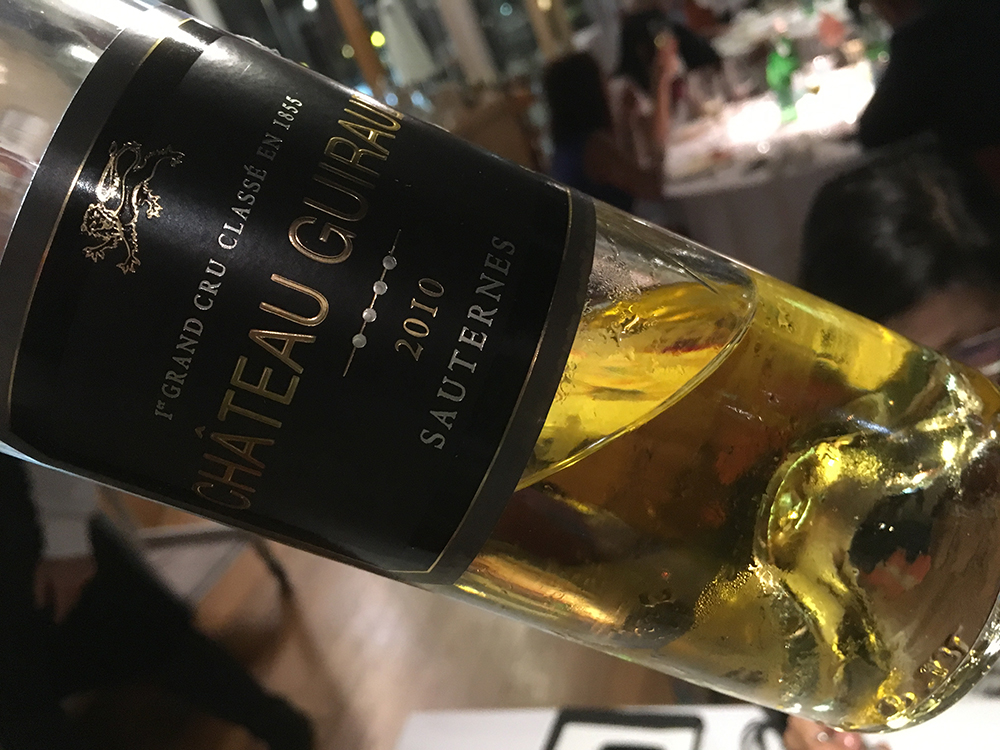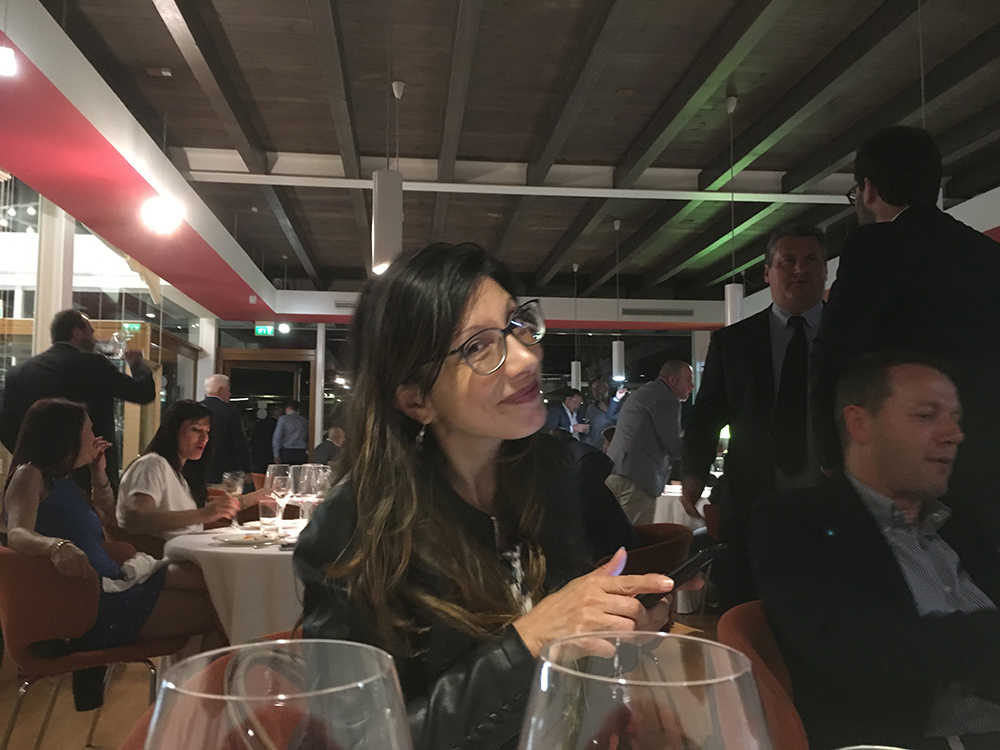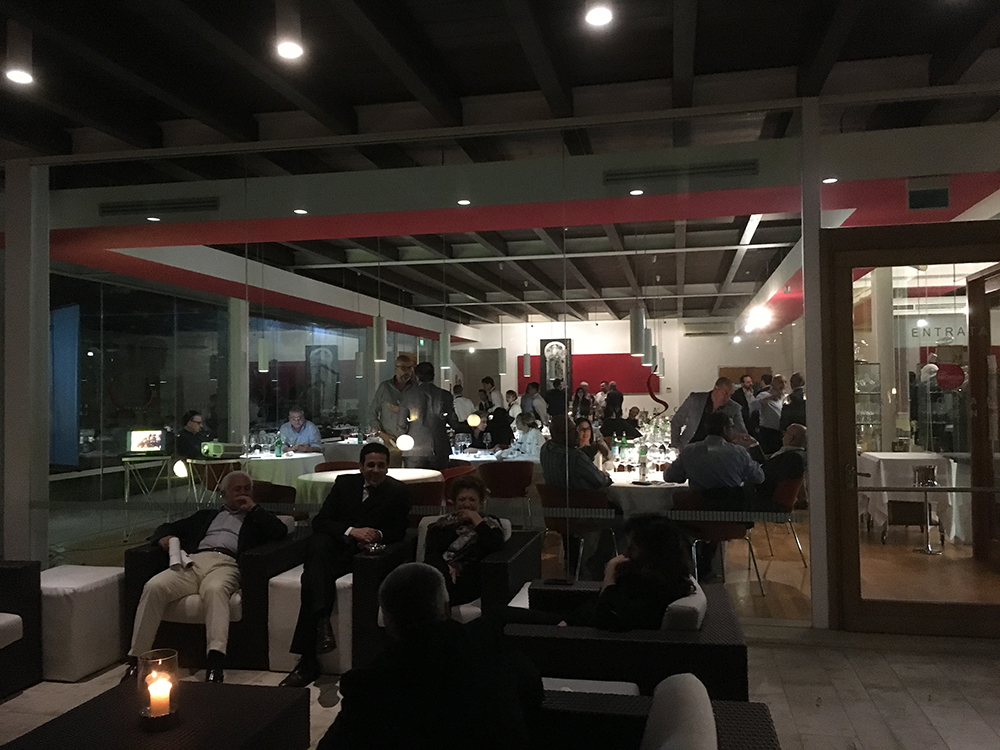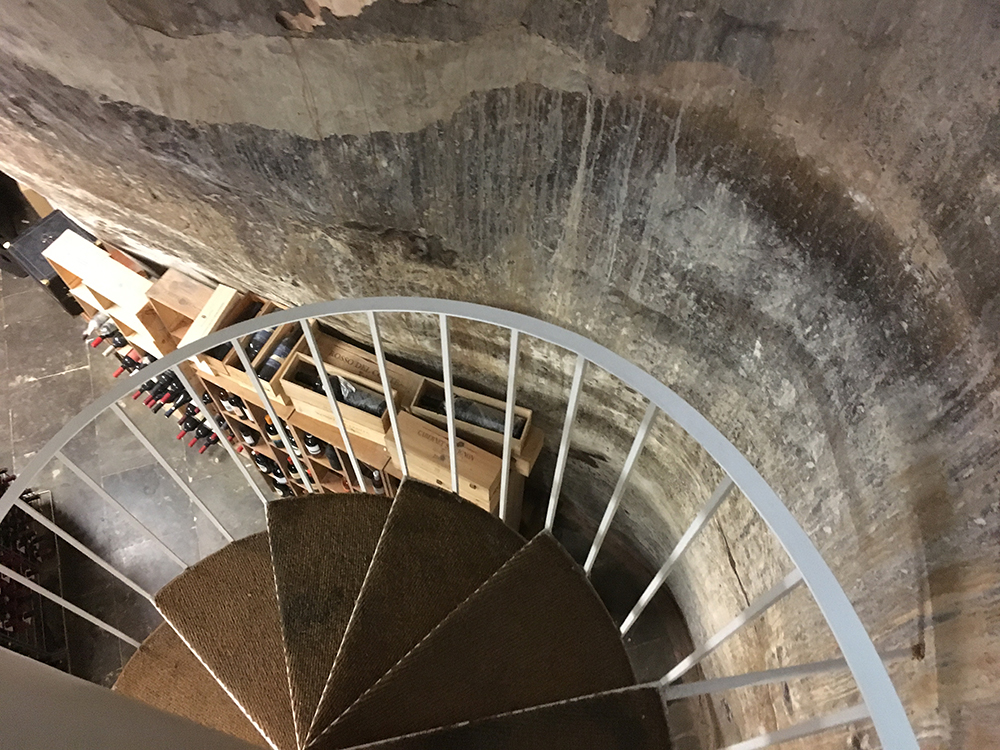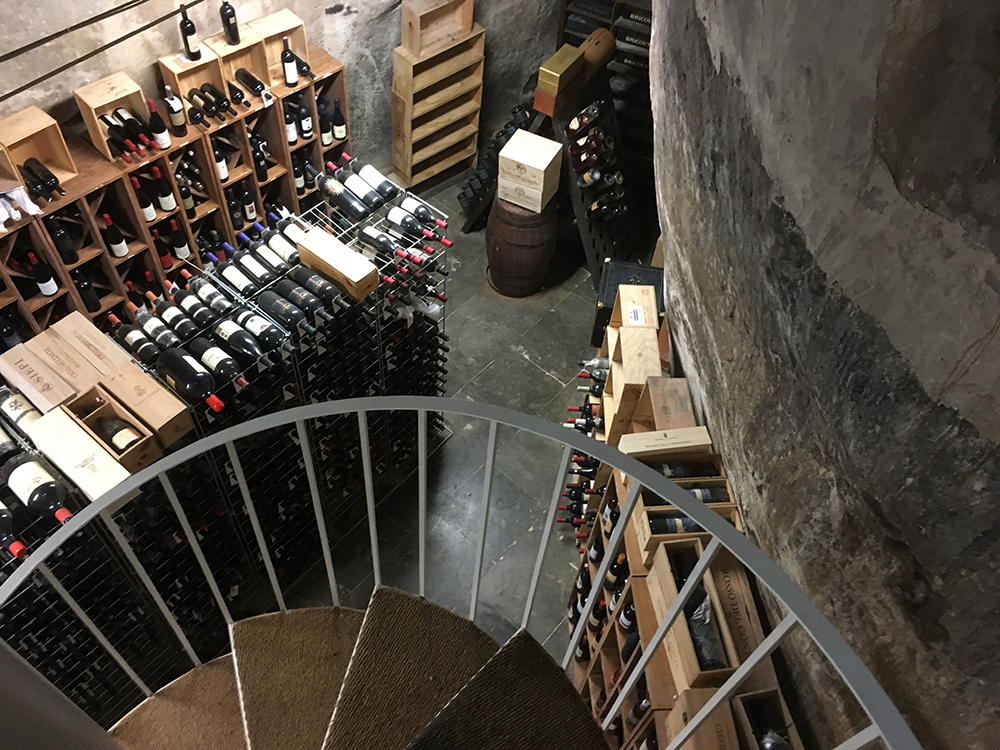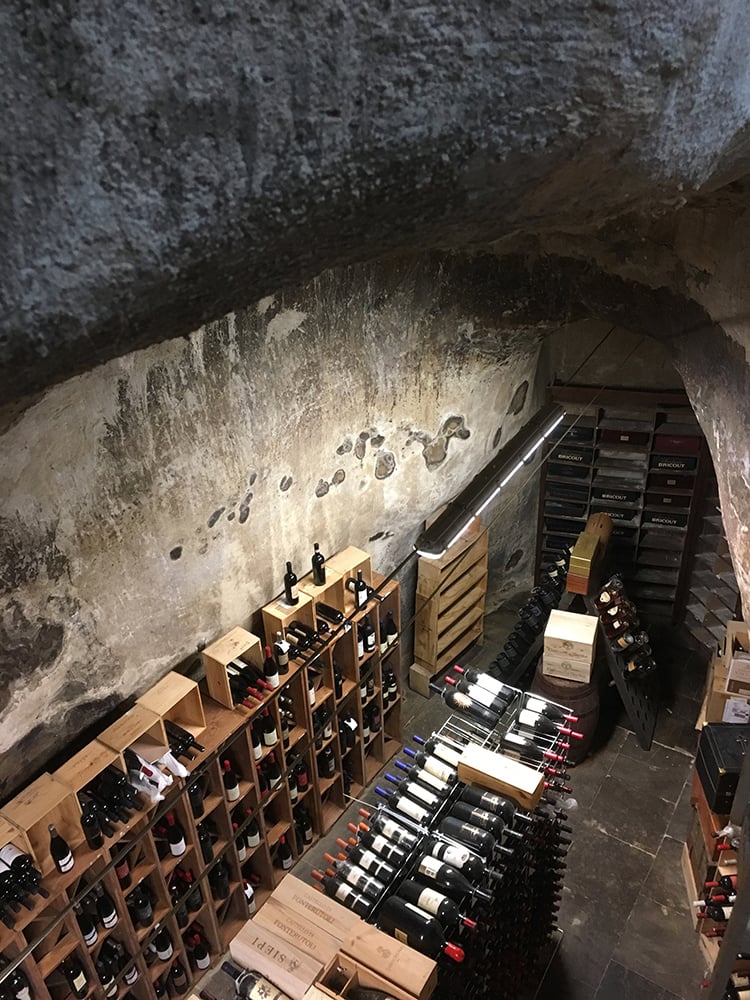I can’t resist puns, the felicitous synthesis of two important evenings. The Hotel Villa Carlotta is an oasis of peace, style, and design towards the outskirts of the higher part of Ragusa which looks both towards the interior and Chiaramonte Gulfi and westwards towards Comiso. After three curves, between small villas and the recent buildings of a residential area, what appears is a surprise.
I had visited it several years ago and the return is a pleasure. The gardens are green and well manicured, the lawn and the pool give that touch of freshness which never harms. The boutique hotel includes “La Fenice”, its gourmet restaurant. Aesthetically it is successful compromise between a large Ragusa country home with light-colored stone well in evidence and uncovered and contemporary architecture: glass walls which extend from the floor to the ceiling, five meters high, which throw light on spaces, elegance, and a comfort which is anything but usual. The chambers are spacious, the smallest is 35 square yards (30 square meters), some chambers have a mezzanine, and one has a circular hydromassage tub in its center. The “sniper” is Claudio Ruta, born in 1971: La Fenice has received a Michelin star, conquered in 2010, and two forks from the Gambero Rosso restaurant guide. His profession demands that he smother his guests with taste and assure them the pleasures of the table, a task he carries out with fearsome determination. His “shots” never miss their mark. Ruta masters sensations and flavors, the outcome is assured even in the simplest preparations. A master. And there is an important detail: the ability to manage a large number of guests as though they were a table for two. A rare and precious quality.
As I said, two evenings close together in time, both in May: the first a tranquil one with a friend, the second a public event with Giulio Menegatti – an importer of French wine from the Veneto – who presented several important wines during the event and dinner, “Four steps through France”, with much competence and in much detail. An opportunity not to be missed to take stock of some important territories of our transalpine cousins. These are the plates which between the two evenings gave us the greatest pleasure: velouté of peas served with a roasted onion stuffed with Sicilian sheep cheese and smoked ham matched with the Crémant de Bourgogne, Les Terroirs – Brut 2014 from Louis Picamelot, a joyous and carefree cuvée made from five native grape varieties,: Pinot Noir, Chardonnay, Aligoté, and Gamay.
Fresh, and with the aromas both of the sea and the countryside the mantis shrimp on a bed of buffalo mozzarella, red cherry tomatoes, cucumber, onion seasoned with Nero d’Avola wine, basil leaves, and “cladodi”, prickly pear leaves. Clamorous and delicious, to say the least, the salted loin of rabbit with foie-gras seasoned with black pepper, lemon, and spaghetti-like strands of vegetables. The cooking and the melting of the fat of the foie-gras created a lovely combination with the Mercurey 1er cru, il Clos du Roi 2012 from Château du Chamirey. Mercurey is a small village located eight miles (thirteen kilometers) to the northwest of Chalon sur Saône and is the most important wine in terms of volume from the Chalônnaise district. The Clos Du Roi 1er Cru è a “monopole” (single-owner property) of the Devillard family. And is a varietal Pinot Noir with notes of blueberries and underbrush, not complex but quite satisfying.
A touch of international class was given by the roasted ham of lamb with smoked egg yolk and a seasonal salad of purple potatoes, a jam of Giarratana onion, bitter Catalonia greens, and bulgur wafers. A cold hors-d’oeuvres, convincing beyond my initial expectations. The juiciness of the meat, soft and succulent, iwa created by macerating it in brine. The fragrance of the lamb, of the onion jam, and of the smoked egg enriched the dish and gave it a greater complexity. The Pinot Noir chosen to match it, slightly to the disadvantage of the dish given the importance of the wine, was the l’Hospices de Beaune – 1er cru “Cuvée Guigone de Salins”. Guigone was the key figure of this great institution – wife of Nicolas Rolin, the founder of the Hospice de Beaune, she moved to the city after the death of her husband in 1461 and directed it until her death in 1482. She left a large part of her fortune and her energies to the Hospice which, after seven centuries, remains one of the most important charitable institutions in all of Europe. The grapes for the wine come from vineyards around the city of Beaune, steep parcels of the Bressandes cru.
Two first courses: spaghetti of durum wheat burned by heat with codfish eggs, caper leaves from the Ibleo high plateau, authentic Sicilian sheep cheese, and mackerel in olive oil along with burnt wheat ravioli stuffed with donkey mortadella (baloney), Jerusalem artichoke sauce and a pistachio crumble. The codfish eggs and mackerel make the first an intense dish of the sea given further complexity by the earthy sensations of the sheep cheese, while the ravioli speak solely of the soil. The overall sensations of the dish keep in check the sweetness of the mortadella in the stuffing and on the plate as well. The wine served turns the gaze towards Pauillac, to a Château Batailley 2014. Classified in 1855 as a 5ème Grand Cru Classé, it is a Bordeaux blend of 70% Cabernet Sauvignon, 25% Merlot, and 5% Cabernet Franc. A Pauillac classic, austere, full, spicy, with elegant notes of blond tobacco and liquorice. It is aged for 18 months in new 60 gallon oak barrels.
The second course consisted of ribs of Sicilian black pig cooked at a low temperature with fennel and potatoes. A dish which wa technically perfect, soft, succulent, quite delicious. The crisp potato flakes give a pleasurable sense of crunchiness. The wine which was selected fully centered its sensations of suppleness: it was a Pomerol, Château du Domaine de l’Eglise, a blend of 85% Merlot and 15% Cabernet Sauvignon. The estate consists of 17 acres (seven hectares) of vineyards with forty years of age. The structure is full, rich in extract, ideal for the supple pork. The firm and velvety sensations accompanied the plate quite elegantly. To finish the evening: a hazelnut dessert with lemon, fresh fruit, meringue, almond nougat, and a raspberry purée. The fresh fruit was the light conclusion to the meal, and the hazelnut dessert gave substance to the plate, well accompanied by the meringue. The Sauternes, Château Giraud 2010, went ideally with the dessert, this 1er Grand Cru classé in the 1855 classification, is an estate located on a high plateau approximately 18 miles (30 kilometers) south of Bordeaux which extends over more than 200 acres (83 hectares) with a vine density of some 2600 vines per acre (6600 per hectare). The blend consists of 65% Sémillon and 35% Sauvignon Blanc. It ages for two years in 60 gallon oak barrels. An applause is well merited for the dynamic and professional dining room service. The 70 persons present were served swiftly and efficiently. Above and beyond this, there was the feminine touch offered by sommelier Manuela Cilia. The imposing wine cellar, something to visit, is underground and was carved out an old natural cistern.
We shall conclude with a particular thanks to Mauro Malandrino, owner, passionate gourmet and expert in wine and a farsighted entrepreneur in the province of Ragusa. With Villa Carlotta and La Fenice he has much to be proud of.
La Fenice de l’hotel Villa Carlotta
Via Gandhi, 3 – Ragusa
Tel. 0932 604140
www.lafeniceristorante.it
www.villacarlottahotel.com
- Mauro Malandrino e Claudio Ruta
- la sala de La Fenice
- Giulio Menegatti di GMF importazione
- vellutata di piselli, cipollotto arrosto con ripieno di pecorino siciliano e speck croccante
- il Prosciutto di agnello al forno con tuorlo d’uovo affumicato, insalatina di stagione con patate viole, puntarelle, conserva di cipolla di Giarratana e cialdine di cuturro
- Canocchie adagiate su mozzarella di bufala, pomodorini rossi, cetrioli, cipolla al Nero d’Avola, foglie di basilico, scorza di limone candita e cladodi
- Spaghetti di grano duro arso dalla calura con uova di baccalà, olive, foglioline di cappero dell’altopiano ibleo, pecorino siciliano Dop e sgombro all’olio di oliva
- il Crémant de Bourgogne, Les Terroirs – Brut 2014 di Louis Picamelot
- Clos du Roi 2012 di Chateau du Chamirey
- l’Hospices de Beaune – 1er cru “Guigone de Salins”
- Ravioli di grano arso con mortadella d’asino ragusano, salsa di topinambur e crumble di pistacchi
- Château Batailley 2014
- Pomerol, Château du Domaine de l’Eglise 2014
- Costine di suino nero siciliano in bassa temperatura con finocchi e patate
- Morbido di nocciole con limoni, frutta fresca, meringhe, croccante e purea di lamponi
- Château Giraud 2010
- Gianna Bozzali
- la sala e l’esterno
- la cantina
- la cantina
- la cantina
- la cantina




